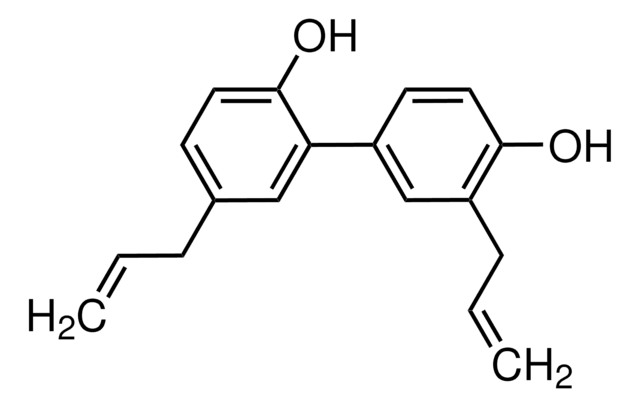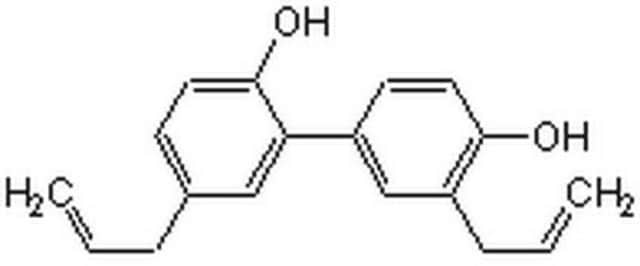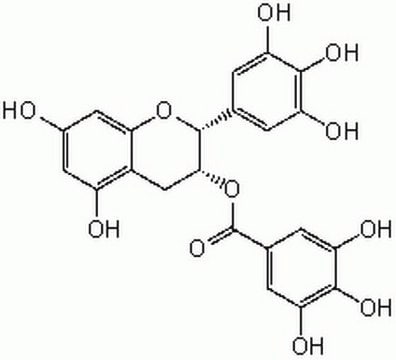H4914
Honokiol
≥98% (HPLC), powder
Synonyme(s) :
5,3′-Diallyl-2,4′-dihydroxybiphenyl, NSC 293100
About This Item
Produits recommandés
Pureté
≥98% (HPLC)
Forme
powder
Conditions de stockage
desiccated
Solubilité
DMSO: 36 mg/mL
Spectre d'activité de l'antibiotique
Gram-positive bacteria
neoplastics
Mode d’action
DNA synthesis | interferes
Température de stockage
2-8°C
Chaîne SMILES
Oc1ccc(cc1CC=C)-c2cc(CC=C)ccc2O
InChI
1S/C18H18O2/c1-3-5-13-7-9-18(20)16(11-13)14-8-10-17(19)15(12-14)6-4-2/h3-4,7-12,19-20H,1-2,5-6H2
Clé InChI
FVYXIJYOAGAUQK-UHFFFAOYSA-N
Vous recherchez des produits similaires ? Visite Guide de comparaison des produits
Catégories apparentées
Description générale
Application
- to study its effects on plasmid hSirt3102-399 deacetylation activity
- as an antioxidant to study its cytoprotective role in human ovarian cancer cells (SKOV-3) and Chinese hamster ovary cells (CHOK1)
- to explore its effects on oxidative stress and mitochondrial dysfunction via a sirt3-dependent manner
- for intracerebroventricular (ICV) cannulation
Actions biochimiques/physiologiques
Caractéristiques et avantages
Mention d'avertissement
Danger
Mentions de danger
Conseils de prudence
Classification des risques
Aquatic Chronic 2 - Eye Dam. 1
Code de la classe de stockage
11 - Combustible Solids
Classe de danger pour l'eau (WGK)
WGK 3
Point d'éclair (°F)
Not applicable
Point d'éclair (°C)
Not applicable
Équipement de protection individuelle
dust mask type N95 (US), Eyeshields, Gloves
Certificats d'analyse (COA)
Recherchez un Certificats d'analyse (COA) en saisissant le numéro de lot du produit. Les numéros de lot figurent sur l'étiquette du produit après les mots "Lot" ou "Batch".
Déjà en possession de ce produit ?
Retrouvez la documentation relative aux produits que vous avez récemment achetés dans la Bibliothèque de documents.
Les clients ont également consulté
Articles
Chronic inflammation is an underlying factor in the development and progression of many of the chronic diseases of aging, such as arthritis, atherosclerosis, diabetes, and cancer.
Apoptosis regulation involves multiple pathways and molecules for cellular homeostasis.
Cell cycle phases (G1, S, G2, M) regulate cell growth, DNA replication, and division in proliferating cells.
Notre équipe de scientifiques dispose d'une expérience dans tous les secteurs de la recherche, notamment en sciences de la vie, science des matériaux, synthèse chimique, chromatographie, analyse et dans de nombreux autres domaines..
Contacter notre Service technique















